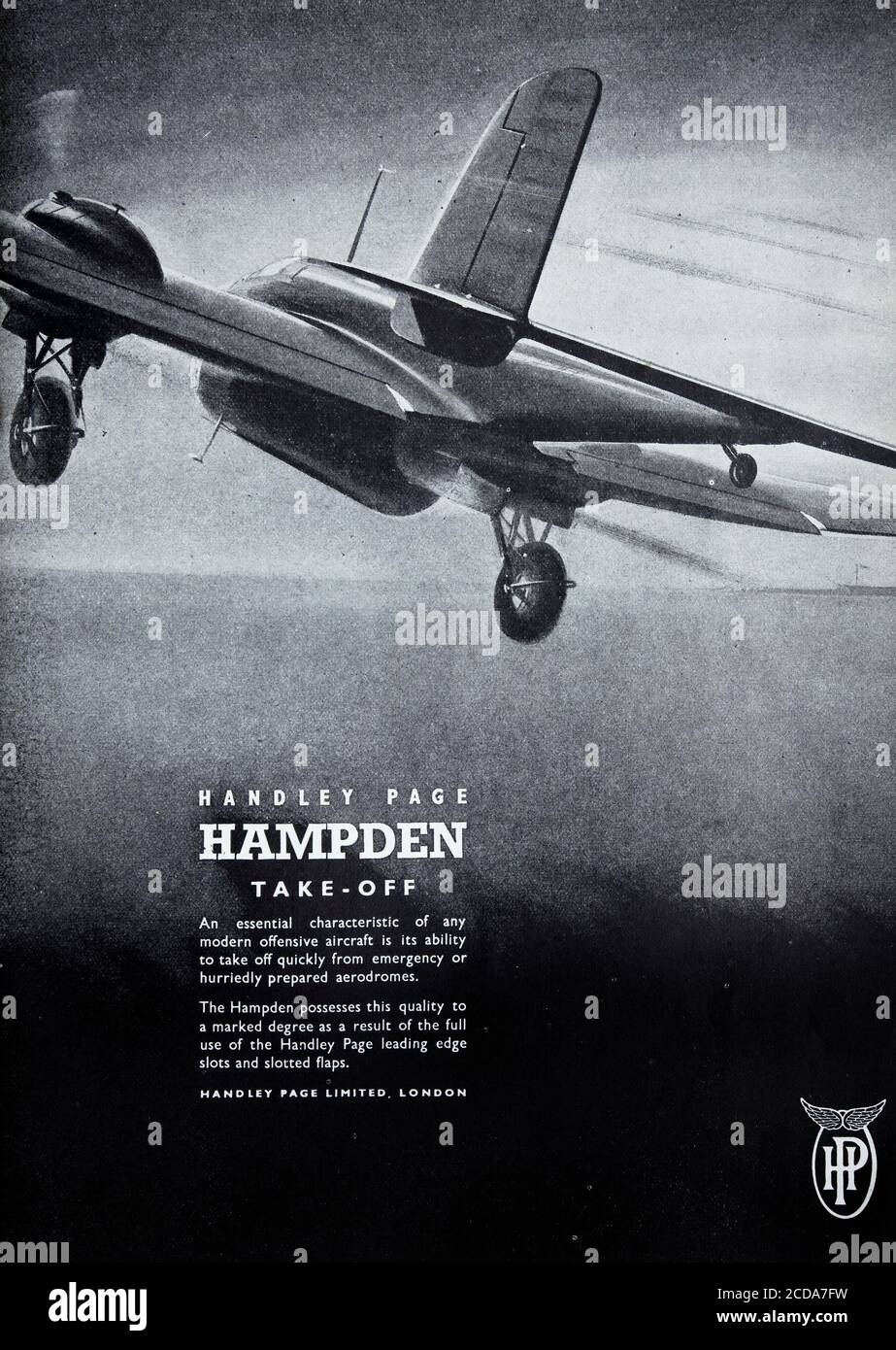Handley Page Slots
Independently of Lachmann, Handley Page Ltd in Great Britain also developed the slotted wing as a way to postpone the stall by delaying separation of the flow from the upper surface of the wing at high angles of attack, and applied for a patent in 1919; to avoid a patent challenge, they reached an ownership agreement with Lachmann. These aircraft differed from the prototype and the aircraft flown by the RAF in having Handley-Page slots fitted to the upper wings. This was followed by the first order for 12 aircraft from the RAF, placed in May 1935 with the first production aircraft, serial number K5772, flying on 16 March 1936. In RAF service the type was named the Walrus.
Handley Page HP.42
Handley Page HP.45
Handley Page Slats
To Imperial Airways fell the task of establishing British commercial air transport on an economic basis, and with government backing it became possible - at least in a modest way - to begin the procurement of new aircraft and the survey and inauguration of air routes to link the British Empire. Needing more capacity than was provided by its 18-20-seat Armstrong Whitworth Argosy or 14-seat Handley Page W.10 aircraft, Imperial Airways acquired from Handley Page eight aircraft designed specifically for use on the European and eastern sections of the Empire air routes.
Large biplanes, with a maximum wing loading of less than 48.2 kg/sq.m, they were of all-metal construction except for the aerofoil surfaces and aft fuselage, which were fabric-covered. The unequal-span biplane wings were devoid of flying and landing wires, braced instead by massive Warren girder struts, and having ailerons and Handley Page slots only on the upper wing. The tail unit was also of biplane configuration, with triple fins and rudders, and the heavy landing gear was of fixed-tailwheel type. Power plant comprised four supercharged Bristol Jupiter engines, two mounted on the upper wing and one on each side of the fuselage on the lower wing.
For the first time in any British airliner the crew were accommodated inside the aircraft, in a compartment high in the fuselage nose which we would now call a flight deck. Within the main cabins - fore and aft of the wing area where the engine noise originated - passengers were provided with completely new standards of comfort and spaciousness.
Those intended originally for eastern use (on the Indian and South African routes) carried six (later 12) passengers in the forward cabin and 12 in the rear, with space for 14.16cu.m of baggage and mail amid-ships. The four equipped for the European routes (based at Croydon) carried 18 passengers forward, 20 aft and had 7.08cu.m of baggage space. The first HP.42 flew on 14 November 1930. It was equipped subsequently for long-range service (H.P.42E, 'E' for Eastern) and named Hannibal.
Handley Page H.P.42
Four Hannibal class H.P.42s, operated in semi-tropical conditions on the long eastern mail routes between Karachi, Cairo and Kisumu.
Anthony Fokker once commented that H.P.42s had built-in headwinds, but their cruising speed of around 161km/h, excellent handling at low speeds and robust structure ensured that they were able to boast a decade of fatal-accident-free flight before being withdrawn from civil airline service on 1 September 1939.
The H.P.42 was developed into two variants: the H.P.42E (Eastern) for long-haul routes to the middle East and beyond, and the H.P.42W (Western or HP.45) for imperial's flights to Paris and other European cities.
There were four Heracles class H.P.45s, used on Imperial Air-ways western routes from Croydon to Europe. First of the H.P.42W ('W' for Western) for the European services was delivered in September 1931 and named Heracles.
The two versions wore generally similar, except that the Heracles had 550 hp Jupiter X.FBM engines and accommodation for 38 passengers, whereas Hannibal had Jupiter XIs of the same power and seats for only 18 passengers.
The remainder of this family of 1930s 'Jumbo' airliners had the names Hadrian, Hanno, Helena, Hengist, Horatius and Horsa.
Handley Page Halifax

Handley Page 0/400
Together they flew some ten million miles without ever hurting a passenger, until the last of them disappeared on a wartime flight in the Middle East.
With their girder-braced biplane wings and massive fixed undercarriage they had a maximum cruising speed of about 100 mph (161 km/h), but offered standards of comfort and safety that no other transport of the period could equal. As a result, they carried more passengers between London and the Continent in the 1930s than did all other airliners combined, and without ever hurting a passenger until the last of them disappeared during a wartime flight in 1940.
Five also serviced the RAF during the Second World War.
Handley Page Slot
HP.42W / HP.45 Hercules
Engines: 4 x 550 hp / 414kW Jupiter X.FBM
Span 130 ft / 39.62 m
Length 89 ft. 9 in / 27.36 m
Height 27 ft
Weight empty: 21,000 lb / 9,620 kg
Weight loaded 30,000 lb
Max. speed 127 m.p.h. / 204 km/h
Cruising speed 95-105 mph / 153-169 km/h
Range: 805 km / 500 miles
Crew: 2
Pax cap: 40